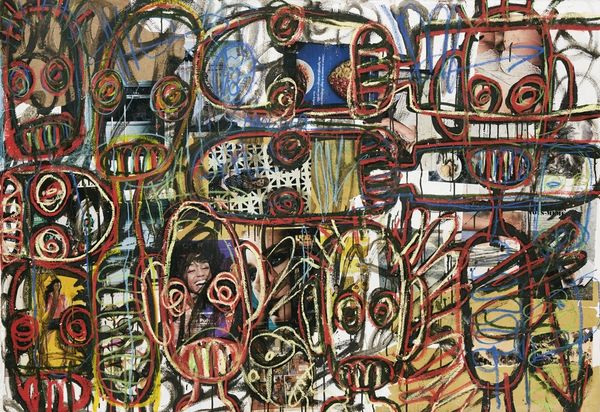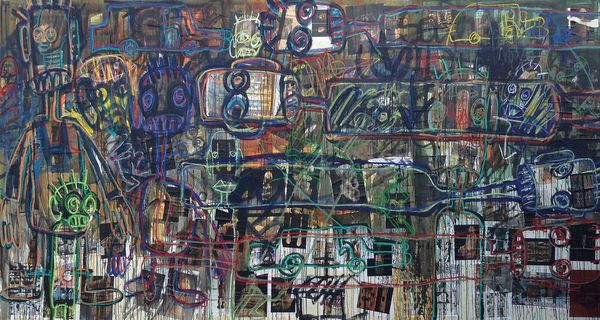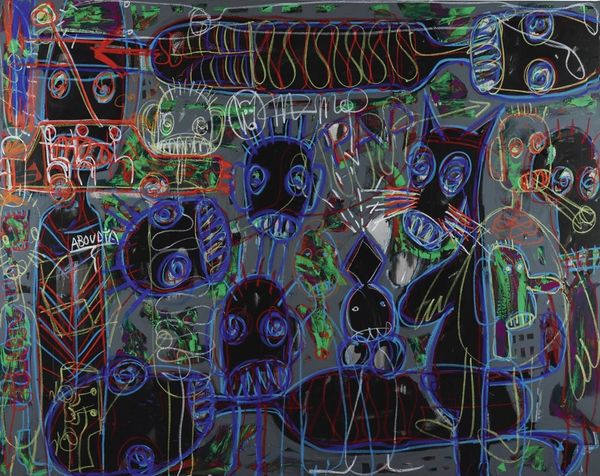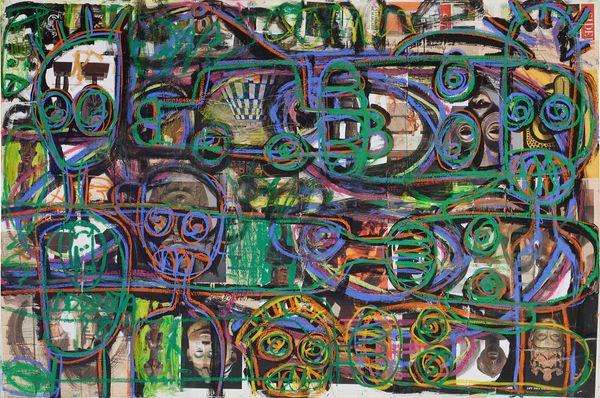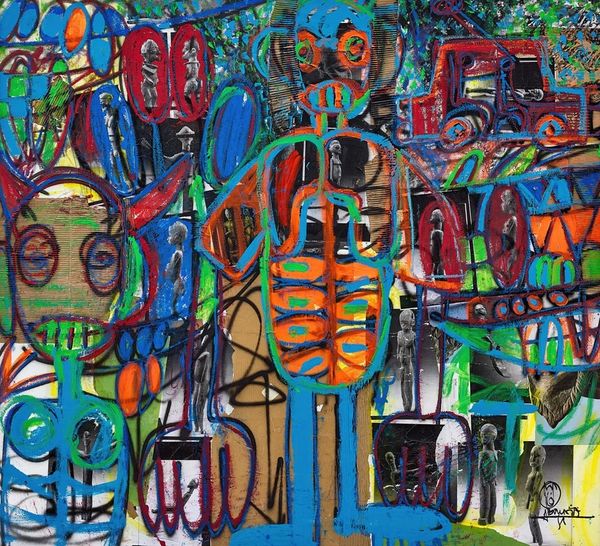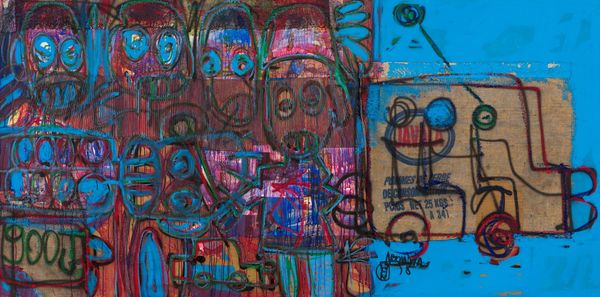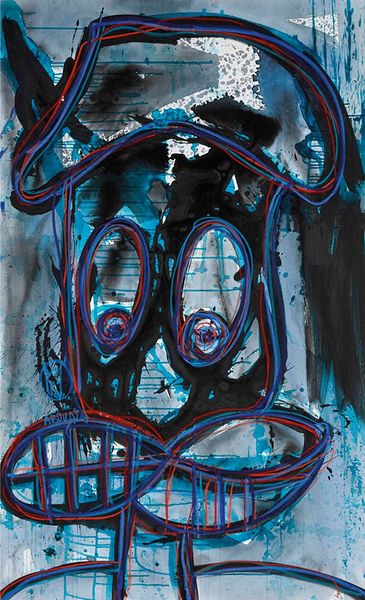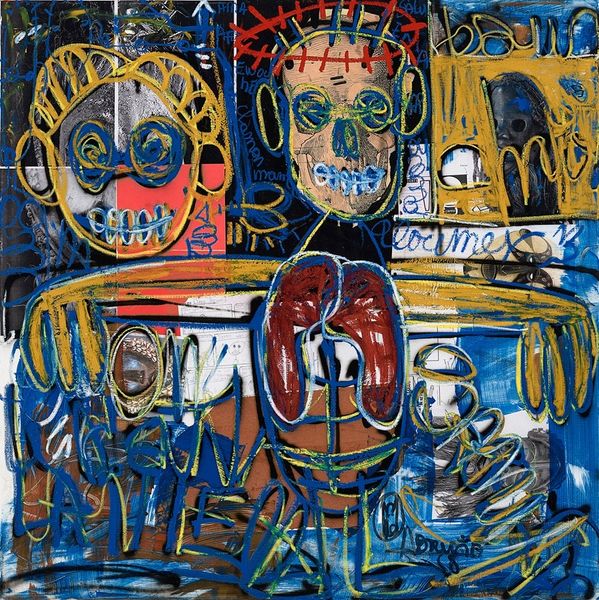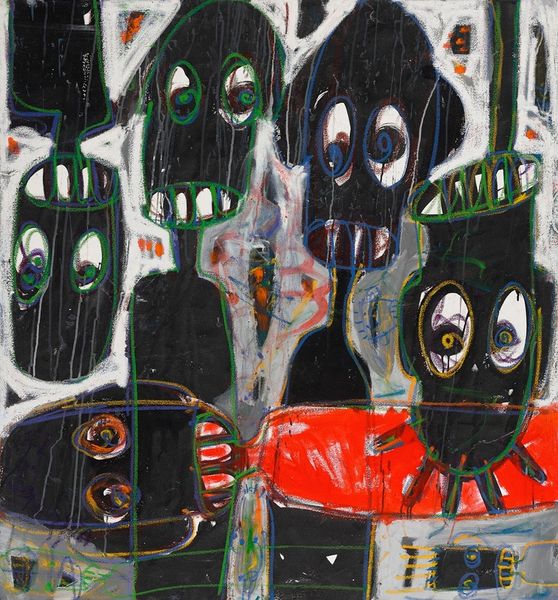
Copyright: Modern Artists: Artvee
Curator: Looking at Aboudia’s “Street Kids,” painted in 2015, I’m immediately struck by its raw, visceral energy. The density of figures and the near monochrome palette, aside from the striking reds, create a feeling of urgency. Editor: It's a captivating chaos, isn't it? I'm thinking about the title itself. Considering Aboudia's background, what does "street kids" evoke in terms of broader social narratives about youth, urban space, and even post-colonial identity in places like Abidjan? Curator: That’s key. Aboudia paints from his lived experience in Côte d'Ivoire. His work speaks to the realities faced by children growing up amidst poverty and political instability. He developed his unique style, often dubbed "Nouchi" art, reflecting the urban slang and visual culture of Abidjan's streets. Editor: Right. And the layered acrylic paint application, almost like palimpsests of urban graffiti, reinforces this connection to the visual landscape of the city. The figures themselves seem almost like abstracted masks. Are they meant to represent specific individuals, or something more symbolic? Curator: It's a bit of both, I think. They are universal representations of vulnerability, yet the details—the eyes, the mouths—suggest distinct personalities caught in a shared struggle. Considering the neo-expressionist roots of his art, we might think about how these faces can represent a psychological mapping of the urban experience and children trying to navigate that. Editor: Absolutely, these aren’t passive subjects. The use of red outlines—aggressive yet vulnerable, simultaneously enclosing and liberating the figures—speaks to the lived intensity and visibility that children have. They’re assertive in taking up urban space despite their vulnerabilities, it makes this image more than just an act of documentation. Curator: Yes, that intense red feels almost like a scream amidst the grey. Editor: Thinking about the public role of art, this feels like a demand for acknowledgement, right? By presenting these “street kids” within gallery contexts, Aboudia disrupts traditional modes of representation and challenges us to confront uncomfortable realities, the kind easily avoided or dismissed. Curator: Precisely. It reminds us of the power of art to not just reflect society but also to actively intervene in its ongoing narratives. It pushes the viewer into thinking more deeply about childhood as more than just a period of innocence. Editor: Yes, “Street Kids” offers us an invitation to deconstruct and understand how systems of power and privilege actively work to impact children in Côte d'Ivoire and globally. Curator: A compelling image and perspective indeed.
Comments
No comments
Be the first to comment and join the conversation on the ultimate creative platform.

